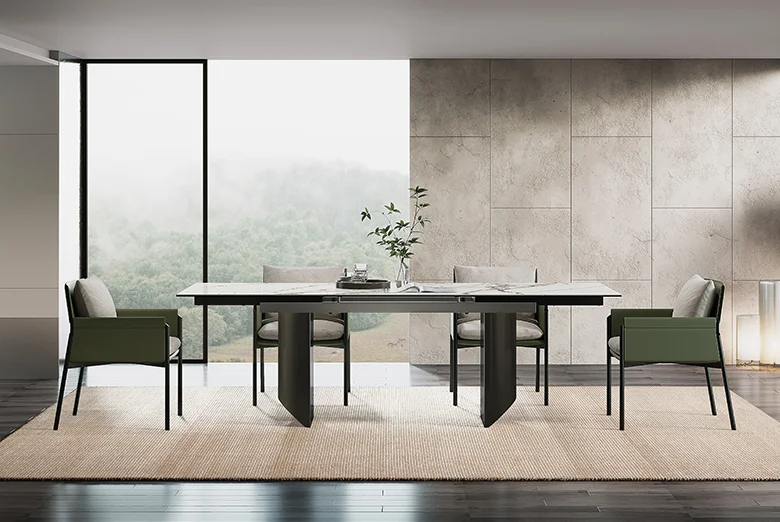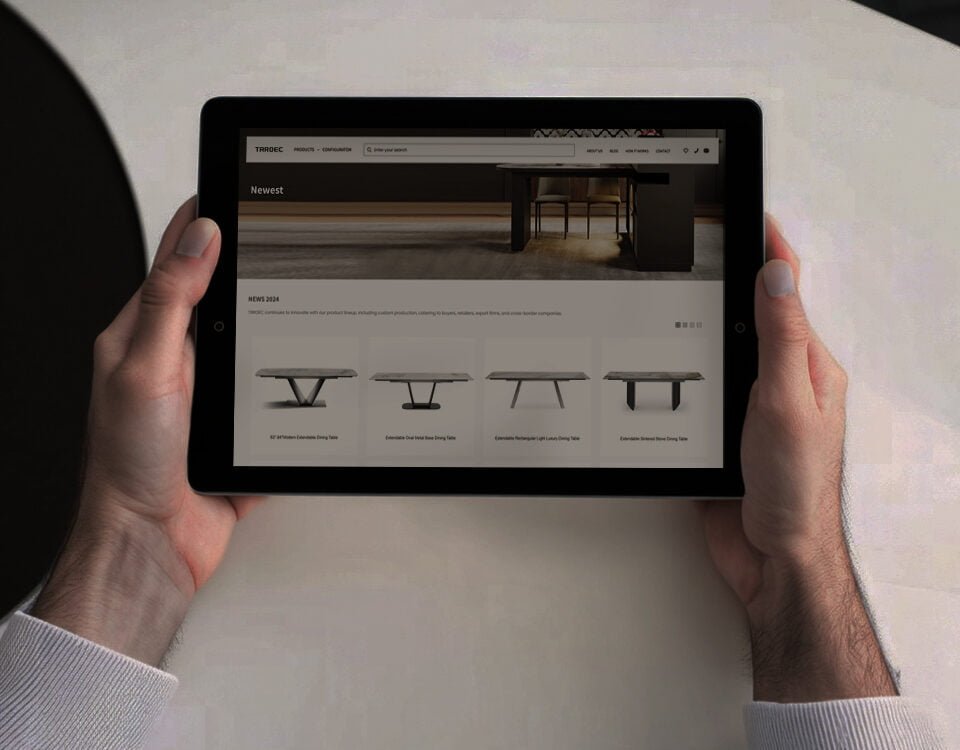1. Introduction
Dining room furniture plays a crucial role in defining the aesthetics and functionality of dining spaces, whether in residential homes or commercial establishments. For businesses such as trading companies, furniture stores, buyers, designers, and renovation companies, staying updated with the latest trends and innovations in dining room furniture is essential. This comprehensive guide explores various aspects of dining room furniture, providing insights into design trends, functional enhancements, and market dynamics.
2. The Evolution of Dining Room Furniture
2.1 Historical Perspective
Dining room furniture has undergone significant transformations over the centuries, reflecting changing social habits, design preferences, and technological advancements.
- Early Designs: Initially, dining furniture was simple and functional, often crafted from heavy woods with minimal decoration.
- Mid-20th Century: The mid-20th century saw the rise of modernism, introducing sleeker designs, lighter materials, and more experimental forms.
- Contemporary Trends: Today’s dining furniture blends aesthetics with functionality, incorporating sustainable practices and innovative materials.
2.2 Influences and Inspirations
Various cultural, technological, and environmental factors influence modern dining room furniture design.
- Cultural Influences: Global design elements, from Scandinavian minimalism to Asian-inspired simplicity, contribute to diverse styles.
- Technological Advances: Innovations in manufacturing and materials allow for more complex and refined designs.
- Environmental Concerns: Sustainability is a driving force, with a focus on eco-friendly materials and ethical production practices.
External Link: For an in-depth look at the history of furniture design, visit The Design Museum’s furniture design timeline.
3. Key Design Trends in Dining Room Furniture
3.1 Minimalist Aesthetics
Minimalism continues to be a dominant trend, characterized by clean lines, simple forms, and a focus on functionality.
- Design Elements: Sleek surfaces, integrated storage, and unobtrusive hardware.
- Color Palettes: Neutral colors such as white, black, and gray, often accented with natural materials like wood and stone.
3.2 Multifunctional Furniture
With increasing demand for space efficiency, multifunctional furniture is gaining popularity.
- Examples: Extendable dining tables, storage-integrated benches, and convertible dining sets.
- Benefits: These designs optimize space usage and offer flexibility for various activities and occasions.
3.3 Sustainable Materials and Practices
Sustainability is crucial in modern dining room furniture design.
- Eco-Friendly Materials: Bamboo, reclaimed wood, and recycled metals.
- Sustainable Practices: Emphasis on energy-efficient manufacturing and reducing waste.
External Link: Learn more about sustainable furniture materials in this Green Furniture Hub guide.
3.4 Vintage and Retro Styles
Nostalgia drives the popularity of vintage and retro styles, combining classic elements with modern functionality.
- Design Elements: Mid-century modern pieces, retro color schemes, and vintage-inspired patterns.
- Integration: Mixing old and new elements to create unique, personalized spaces.
External Link: For vintage furniture trends, check out this House Beautiful article.
4. Functional Enhancements in Dining Room Furniture
4.1 Innovative Storage Solutions
Effective storage solutions enhance the functionality and aesthetics of dining spaces.
- Built-In Storage: Dining tables with integrated drawers and cabinets.
- Multifunctional Pieces: Benches with hidden storage, sideboards with wine racks.
4.2 Ergonomic Design
Ergonomic design ensures that dining furniture is comfortable and user-friendly.
- Seating Comfort: Chairs with ergonomic support, adjustable height features.
- Table Design: Tables designed for optimal legroom and accessibility.
External Link: For insights into ergonomic furniture design, refer to this Ergonomic Trends article.
4.3 Smart Technology Integration
Integrating smart technology into dining furniture enhances convenience and functionality.
- Smart Tables: Features like wireless charging pads, built-in speakers, and smart lighting.
- Connected Furniture: Integration with home automation systems for seamless control of lighting, temperature, and entertainment.
External Link: Explore smart furniture innovations in this Wired article.
5. Case Studies of Innovative Dining Room Furniture Designs
5.1 Residential Applications
Innovative dining room furniture designs can transform residential spaces, making them more functional and visually appealing.
- Example 1: A compact apartment with a foldable dining table and stackable chairs.
- Example 2: A family dining room featuring a large, extendable table with integrated storage and smart features.
External Link: See innovative residential designs in this Architectural Digest feature.
5.2 Commercial Applications
In commercial settings, well-designed dining furniture can enhance customer experience and operational efficiency.
- Example 1: A restaurant with modular seating arrangements and smart table management systems.
- Example 2: A hotel dining area with flexible furniture layouts to accommodate various events and functions.
External Link: For commercial furniture trends, check out this Foodservice Equipment & Supplies article.
6. Choosing the Right Supplier and Ensuring Quality
6.1 Supplier Selection Criteria
Choosing a reliable supplier is crucial for ensuring high-quality dining room furniture.
- Reputation: Research the supplier’s history and customer reviews.
- Certifications: Look for industry certifications that indicate adherence to quality standards.
- Production Capacity: Ensure the supplier can meet your order volume and deadlines.
External Link: For tips on selecting the right supplier, refer to this Entrepreneur guide.
6.2 Quality Assurance Processes
Implementing robust quality assurance processes is essential for maintaining high standards.
- Inspections: Regular inspections during production to identify and address issues early.
- Testing: Rigorous testing for durability, safety, and functionality.
- Continuous Improvement: Feedback loops and continuous improvement practices to enhance quality over time.
External Link: Learn about quality assurance best practices in this ASQ guide.
7. Future Innovations and Trends
7.1 Emerging Technologies
New technologies are set to revolutionize dining room furniture design and functionality.
- AI and Machine Learning: Predictive maintenance and smart home integration.
- Advanced Materials: Development of new materials that are more durable, lightweight, and sustainable.
External Link: For future tech trends, visit this TechCrunch article.
7.2 Design Evolution
Future design trends will continue to evolve, reflecting changing consumer preferences and technological advancements.
- Personalization: Increased demand for custom-designed furniture that meets specific needs and preferences.
- Hybrid Spaces: Furniture that adapts to multi-functional spaces, blurring the lines between dining, living, and working areas.
External Link: For insights on evolving design trends, see this Dezeen article.
8. Conclusion
In conclusion, modern dining room furniture design is a dynamic field that balances aesthetics, functionality, and sustainability. For B2B clients, staying informed about the latest trends and innovations is essential for making strategic decisions and offering products that meet market demands. By understanding key design trends, functional enhancements, and quality assurance practices, businesses can achieve success in the competitive dining room furniture market.



